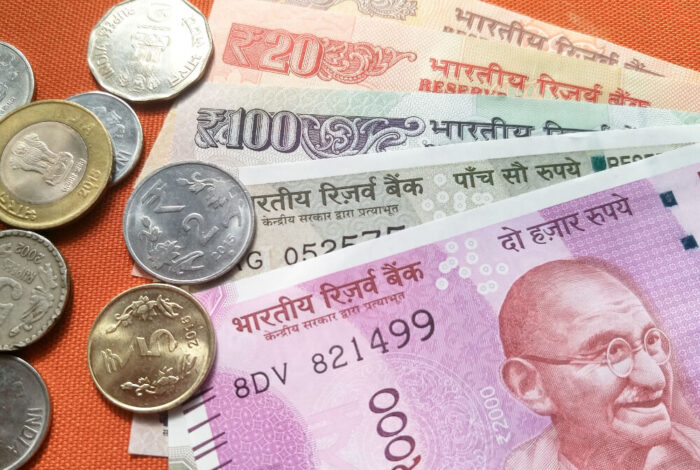29th February 2016 was a landmark day for Leonardo Dicaprio when he won the Oscars, after waiting for a long time. Amid all the Oscar excitement, India’s Finance Minister Arun Jaitley presented the Union Budget 2016-17. The drama and excitement was similar to “will Leo bag the Oscar this time or not!” On the other hand, bets were high on whether India will meet its fiscal deficit target, enact banking reforms, bank recap plan, among others.
Macroeconomic scenario
The economic survey for FY16 showed that India’s economic growth has been stable despite several challenges emerging from the weak global environment. According to the economic survey, various factors such as moderation in inflation, government’s fiscal consolidation measures, etc have helped the economy to deliver a stable performance.
The survey also highlights the economy’s long-term growth potential at 8-10% that can be achieved by promoting a competitive business environment, reaping the benefits of India’s demographic dividend by investing in health and education sectors as well as focusing on the agriculture sector.
The fiscal arithmetic for the Indian union budget
The Indian government has experienced a slowdown in total receipts over the years; however, the 7.3% y/y growth in FY16 has led the government to be optimistic about achieving its ~11% y/y growth target in FY17. Further, the share of revenue receipts has increased, while that of capital receipts has declined over the years. The government is planning to increase the gross tax revenue by improving efficiency in tax collections.
Even tax reform measures and window to tax defaulters should help the government to even exceed the revenue target. The government, too, is optimistic about achieving INR 990bn revenue through the introduction of 700MHz spectrum on premium pricing. Additionally, the disinvestment target of INR 565bn also remains dicey, since the government never reached above INR 378bn in a year through disinvestment revenues over the last four to five years.
The total budget expenditure is projected to increase by 10.7% in FY17 as compared to FY16 (RE). In terms of revenue and capital accounts, the share of revenue account in total expenditure continues to remain above 87% over the last five years. The growth in total revenue expenditure has doubled for FY17 (BE) to 11.9%.
This has only led to increasing share of revenue expenditure in total expenditure. The substantial increase in revenue expenditure can be partly attributed to the government fulfilling the 7th pay panel recommendations and disbursements toward the OROP scheme for defense personnel. Capital expenditure, on the other hand, has seen its growth slow down to a mere 3.9% in FY17 (BE) from 20.9% in FY16 (RE). This has led to a further decline in the share of capital expenditure from 13% in FY16 (RE) to 12.5% FY17 (BE).
Will the government achieve its targets?
The growth in revenue receipts, boosted by higher tax collection has led the Indian economy to attain its revenue deficit target last year. The government is expected to meet its budgeted revenue receipt to GDP and revenue deficit to GDP targets in FY17. Further, the trends indicate that the Modi government is quite keen about achieving fiscal consolidation, since over the last four fiscals (including FY16), it has adhered to its aim to reduce the fiscal deficit to GDP ratio.
However, the budgeted estimate of 3.5% for FY17 appears a tad ambitious as some financials like the total outgo from financial recommendation is yet to be included in the budgeted estimates.
The additional measures: The nine pillars and government’s love towards excess cess
The government has tried to balance requirements of both fiscal consolidation and growth through the announced nine pillars. The finance minister has indicated that the budget is more welfare-oriented. A sizeable amount of more than INR 2tn has been allocated toward infrastructure development, which seems appropriate for plans like 10,000 km highways etc. The infrastructure outlay is positive since the government has given enough indications for the roll out of new projects as compared to last year.
The rural and agriculture sector will also benefit substantially with significant amounts of funds being allocated to both the sectors. However, sops were not visible for the common man. The government has indicated in last year’s budget that ‘Skill India’ is also its prime focus for ‘Make in India’; however, it was not visible in the current budget. The total budget allocation of INR 20bn seems inadequate for achieving the dream scheme of ‘Skill India’. There wasn’t any major announcements for the education sector this time around. The tax rebate in HRA and additional interest rate deduction for first-time home buyers could benefit a small segment of people, while majority was left disappointed.
This budget proposed two new cesses and changed the name of one cess from clean energy cess to clean environment cess. The new ‘Krishi Kalyan Cess’ will be levied on the current service tax plus other cesses, while an infrastructure cess would be applicable on sale of cars. The trend for service tax shows the government is trying to make it comparable to the 18% proposed in Goods and Service Tax bill. After the KKC, the new service tax would stand at 15%. The infra cess will only impact the costs of cars.
Can government walk the talk? Startups and banking fraternity seek answers
Prime Minister Narendra Modi raised expectations for startups in his speech in January 2016. So the tax sops etc were anticipated but founders are still looking for some concrete support. The reduced time-frame for capital gains to two years although positive, will not be helpful as investors generally exit after two years. Tax sops also cannot help much as startups do not make much profit in two years, while they still have to pay the minimum alternate tax.
So the benefits would actually reduce according to Paytm founder Vijay Shekhar Sharma. Further, the meager amount of INR250bn of bank recapitalization has really affected sentiments in the banking industry. The recent asset quality review by RBI has severely affected the capital adequacy of public sector banks, which really need a big chunk of capital to adhere to the Basel III norms. The government stated that it will support the banks whenever needed, but feels that the latter needs to show some concrete measures.

